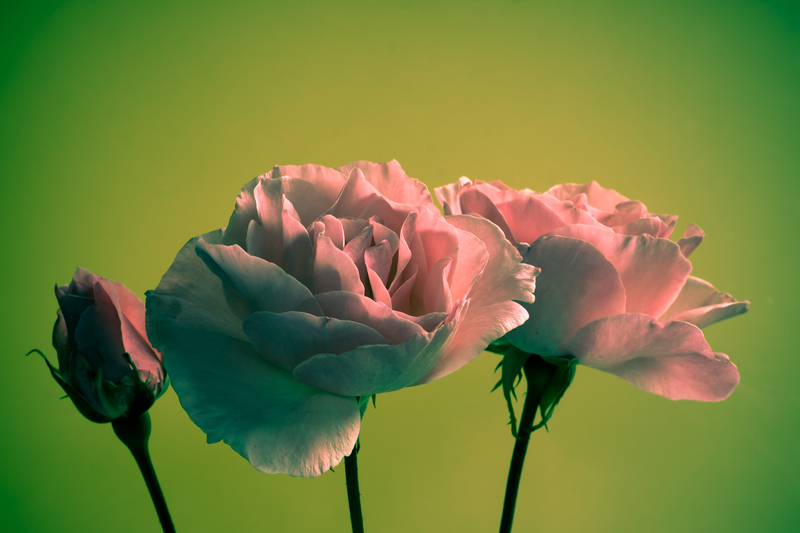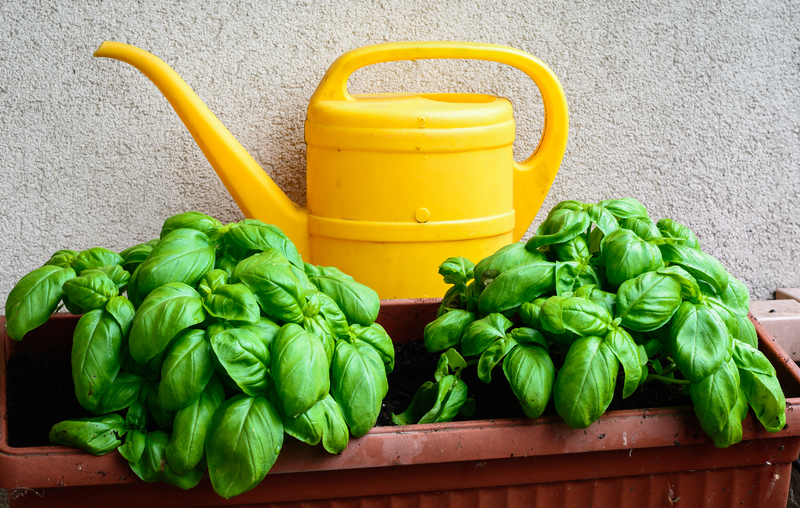Evergreen Climbers for Shade: Enchanting the Dim Corners
Posted on 20/05/2025
Shaded corners in gardens can be challenging to ignite with life, yet they hold amazing potential. With the proper choice of greenery, you can transform these dim spaces into breathtaking features--living tapestries that provide color, texture, and year-round interest. One of the most enchanting ways to achieve this is by embracing evergreen climbers for shade. Not only do these stalwart plants cover walls, fences, and trellises with lush foliage, but they also keep your garden vibrant throughout the seasons, defying the gloom of less-sunny spots.
Why Choose Evergreen Shade Climbers?
Most gardeners crave persistent foliage and visual interest even where sunlight barely reaches. Here are a few reasons why evergreen shade-loving climbers should be at the top of your list:
- All-Year Appeal: Evergreen climbers retain their foliage through winter, ensuring continual coverage and beauty.
- Low Maintenance: Once established, many become resilient and handsome with minimum pruning and fuss.
- Wildlife Friendly: Birds and insects often find refuge within their dense leaves and flowers.
- Versatile Use: These climbers are perfect for dressing up unsightly walls, fences, pergolas, arches, or even as living privacy screens.
- Enhanced Microclimates: By blanketing cool, shaded surfaces, evergreen climbers can humidify microenvironments, benefitting other shade-loving plants.

What Makes a Good Evergreen Climber for Shade?
Adaptability is key. Good specimens must thrive in lower light, cope with damper soil, and maintain healthy growth with limited direct sun. While not all evergreens are suited, certain species and varieties excel at brightening shady nooks. Ideal shade-tolerant evergreen climbers will:
- Perform with 2-3 hours of direct sunlight, or dappled light throughout the day.
- Resist common pests and diseases prevalent in humid, dim environments.
- Provide attractive foliage, possibly complemented by flowers or berries.
Top Evergreen Climbers for Shade: Living Jewels of the Dim Corners
1. Ivy (Hedera helix and Hybrids)
Ivy is the classic choice for shade, famed for its adaptability and myriad of leaf shapes and colors. This vigorous climber uses aerial roots to cling to almost any surface, making it a popular choice for covering shaded boundaries. With cultivars ranging from golden-variegated to deep green, you can select the perfect accent for your garden style.
- Light requirements: Full shade to partial sun.
- Soil preference: Moist but well-draining.
- Maintenance: Prune regularly to manage spread and shape; invasive in some areas--choose cultivars responsibly.
2. Climbing Hydrangea (Hydrangea anomala subsp. petiolaris and Evergreens)
This elegant climber is typically deciduous, but the hybrid 'Semiola' offers semi-evergreen performance, especially in mild climates. Its lush, glossy leaves stick around longer than most, and massed white lace-cap blooms provide summer sparkle even in deep shade. Look for the Hydrangea seemannii, an evergreen hydrangea for milder regions.
- Light requirements: Part to full shade.
- Benefits: Textural foliage, tolerance of neglected spots, beautiful flowers.
- Caution: Slow to establish, but well worth the wait.
3. Star Jasmine (Trachelospermum jasminoides)
Star jasmine is a sought-after shade-tolerant evergreen climber with glossy dark green foliage and highly fragrant, star-shaped white blooms. Though flowering is highest in sun, it will still bloom and maintain lush coverage in shade. It's a superb choice for covering walls and trelliswork in sheltered, dim spaces, especially in urban gardens.
- Light requirements: Part shade to bright indirect.
- Bonus: Evergreen foliage takes a deep bronze hue in winter for added interest.
4. Clematis armandii
This elegant evergreen clematis delights with leathery green leaves and abundant clusters of scented white spring flowers. Clematis armandii excels in sheltered, partially shaded positions where cold winter winds are avoided.
- Trained over fences/arbors: It transforms blank, shady runs into lush focal points.
- Soil: Prefers neutral to slightly alkaline, well-drained conditions.
- Tips: Avoid deep shade, offer adequate moisture, and mulch roots to keep them cool.
5. Japanese Honeysuckle (Lonicera japonica 'Halliana')
Japanese honeysuckle is one of the best evergreen climbers for dim corners, providing dense foliage and sweetly scented white-to-yellow flowers even in less-lit parts of the garden. Perfect for boundary screens or wild cottage gardens.
- Maintenance: Prune annually to keep in check.
- Wildlife: Attracts pollinators and birds.
- Note: Can be aggressive--use in contained spaces or monitor spread.
6. Evergreen Hydrangea (Pileostegia viburnoides)
This lesser-known evergreen climber revels in heavy shade. Pileostegia viburnoides grows slowly but forms beautifully layered, glossy foliage and soft creamy flower panicles in late summer.
- Position: Shady walls and north-facing facades.
- Benefits: Low maintenance, subtle elegance, attracts insects.
7. Wintercreeper (Euonymus fortunei)
Valued for its versatility, wintercreeper grows as a ground cover or can scale shaded walls and fences with ease. It's popular in its variegated forms, lending light and interest to gloomy corners.
- Low sun tolerance: Maintains color in deep shade.
- Simple care: Occasional pruning to shape and manage size.
8. Passion Flower (Passiflora caerulea and hybrids)
Hardy passion flowers offer year-round green interest and flamboyant flowers. While some varieties need sun, several, including Passiflora caerulea, cope well with partial shade. In frost-free climates, these are fully evergreen.
- Unique blooms: Exotic flowers from summer to autumn.
- Hardiness: Provide protection from harsh winter exposure in cooler climates.
Designing with Evergreen Shade-Loving Climbers
Choosing the Right Spot
Select locations that receive indirect or dappled light. Under trees, along north or east-facing walls, or in the shadow of taller structures, these areas often benefit from a green lift. Remember that even shade-tolerant evergreens appreciate some bright light for optimal growth.
Support for Evergreen Climbers
Most shade climbers need something to cling to, whether it's a trellis, wire framework, pergola, or rough wall. Before planting, ensure support systems are robust and won't damage masonry or paint, as some--like ivy--cling directly and can be tenacious.
Soil Preparation and Planting Tips
- Enrich the soil: Dig deeply and blend in organic matter for vital nutrients and improved drainage.
- Mulch thickly: A 5-8cm layer will conserve moisture, suppress weeds, and shield roots from temperature swings.
- Feed in spring: Use a balanced, slow-release fertilizer for vigorous growth.
Companion Planting with Shade Climbers
Underplant evergreen climbers with perennials like ferns, hostas, and hellebores for a full tapestry of texture and color. Groundcover plants enhance shade gardens and thrive in similar conditions.
Maintaining Lushness All Year Round
Regularly monitor moisture, especially in dry spells under trees or by buildings. Shape with shears after flowering or in late winter, and check for pests such as aphids or scale insects. With minimal effort, these climbers will keep their dense, captivating greenery in the shadiest corners.

Frequently Asked Questions about Evergreen Climbers for Shade
1. Will evergreen climbers flower in the shade?
Most do, though usually less profusely than those in full sun. Varieties like star jasmine, climbing hydrangea, and honeysuckle are best bets for blossoms.
2. Do shade-loving climbers require special feeding?
Borders and walls in shade tend to have dry, nutrient-poor soil. Apply slow-release fertilizer in early spring and mulch yearly for best results.
3. Are there fast-growing evergreen climbers for dim corners?
English ivy and some jasmine varieties are notably vigorous. However, rapid growth can mean more regular pruning is needed.
4. Which evergreen climber is safest for walls and structures?
Star jasmine and evergreen clematis cling by twining (not roots), which is gentler for walls than ivy's direct attachment. Always check your wall's integrity before planting any climber.
Transform Your Shaded Corners
Evergreen climbers for shady areas offer unparalleled beauty and practicality for those dim garden nooks that so often feel neglected.
- They add structure and life across all seasons, even when other plants slumber.
- With the right species, garden care is straightforward, and rewards are immense.
- Your shaded corners can become mystical, living canvases--magical, secluded havens filled with color and movement.
Bring delight to the dim and discover the potential of every part of your landscape by planting enchanting evergreen climbers for shade!
Start Planting Today
Transforming gardens is often about seeing opportunities where others see limitations. With evergreen climbers in shaded corners, you create year-round splendor and depth that will enchant you every day of the year. Which of these beautiful climbers will you choose to bring magic to your garden's dimmest spots?

